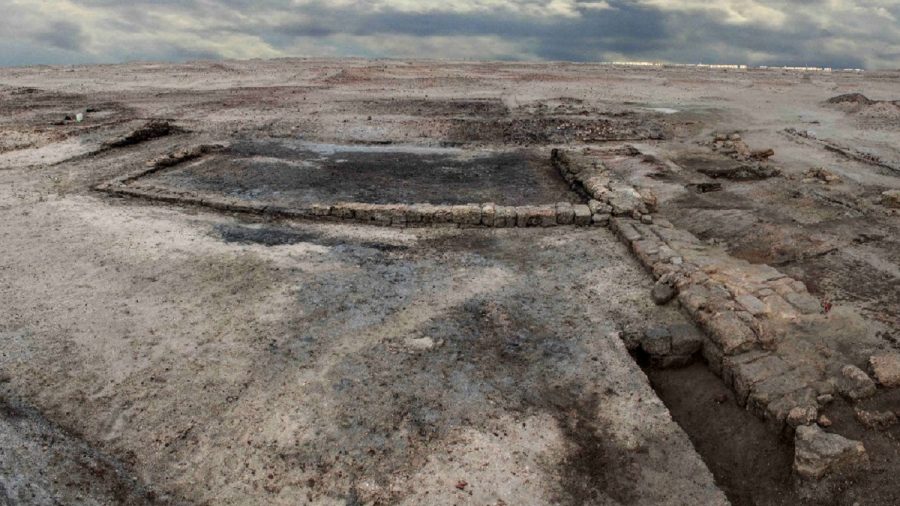CAIRO—Egypt says archaeologists have uncovered an ancient workshop used to build and repair ships that dates back to the Ptolemaic era (332 B.C.-30 B.C.) in the Sinai Peninsula.
The Antiquities Ministry said on Feb. 12, that excavations took place in the Tel Abu Saifi archaeological site in Northern Sinai. The site is said to have been the location of the Roman fortress of Silla.

Mostafa Waziri, secretary general of the Supreme Council of Antiquities, says the workshop includes two dry dockyards where ships were built or repaired.
The Greco-Roman period in Egypt spans from its fall to Alexander the Great in the 4th century B.C. to the Islamic conquest in the 7th century.
Egypt hopes such discoveries will spur tourism, which suffered a major setback during the unrest that followed the 2011 uprising.
Effort to Save Egypt’s Abu Simbel Temples in 1960s Recalled
TURIN, Italy— Egyptologists and other experts gathered in Italy this week to celebrate a successful campaign to save ancient Egyptian temples from being submerged by a dam project 50 years ago and heard of cultural sites facing similar threats now.
The international campaign that saved the temples of Abu Simbel during construction of Aswan High Dam was remembered in Turin as an unprecedented engineering achievement and a turning point that made the preservation of cultural treasures a responsibility that cut across borders.

But experts at the Monday event said that with major dam projects underway in Sudan and Ethiopia, the job of protecting Nubian culture is not finished.
The director of Turin’s Egyptian Museum, Christian Greco, noted that the focus in a modernizing Egypt half a century ago was on saving major monuments, largely due to time pressure.
Recording and salvaging settlements and domestic artifacts received less emphasis, and many were lost underwater when the dam across the Nile River and its lake reservoir went in, he said.
“Unfortunately, we know that the traces, above all of pre-history before mummies, were lost under the waters of Nasser Lake,” Greco said. “It also needs to be a lesson for the future because there are still great challenges.”

In 1960, UNESCO issued an international appeal to save the temples of Amu Simbel, an ancient gateway to pharaonic Egypt, dedicated to Ramses II and his wife Nefertiti.
More than 113 countries responded with funds or expertise. Expert marble cutters from Carrara engaged by the Italian construction firm Impregilo, today Salini Impregilo, led cutting of the imposing sandstone temples into 1,070 blocks. The blocks were subsequently moved to higher ground, and the temples reconstructed and positioned as ancient architects intended: allowing the sun to shine on the end wall two days each year.
Ana Luiza Thompson-Flores, director of UNESCO’s office in Venice, said it was debated at the time whether the $36 million earmarked for the temples’ preservation would have been better spent on initiatives such as ending poverty.

But Thompson-Flores said the global response ultimately “was the birth of the recognition that there were aspects of this world, whether monuments or landscapes, that actually have a recognized outstanding universal value for humanity.”

